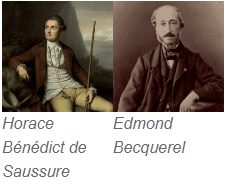Introduction
Australia’s uptake of rooftop solar is one of the highest in the world with more than 30% of free-standing households across the nation now having a solar PV system installed.
While many of us understand the concept that solar panels collect energy from the sun and convert it into electricity, few of us know exactly how they do this.
Below we take you through a brief history of solar power development before explaining how solar panels work.
A Brief History of Solar Power

There are many early contributors to the development of the solar-powered technology we use today – so much so that the following summary won’t do them justice. However, it will provide some context to the development of solar power as we know it.
Historical records of using the sun as a source of energy date back as far as 3rd century BC, when the Greeks and Romans were known to harness solar power with mirrors to light torches for religious ceremonies. There is also evidence that ancient cultures considered solar orientation and passive heating in the construction of residential dwellings.
In 1767, Swiss scientist Horace Bénédict de Saussure designed the first solar thermal collector – a device that was used to heat air inside a box. Featuring three layers of glass, this insulated box or ‘oven’ was designed to trap outgoing thermal radiation and could reach temperatures of up to 110°C.
A significant moment in solar power development came in 1839 when Alexandre Edmond Becquerel observed and discovered the photovoltaic effect which explains how electricity can be generated from sunlight. He claimed that “shining light on an electrode submerged in a conductive solution would create an electric current.” This discovery paved the way for more practical developments in solar-powered technology.
In the 1860s, psychic professor Augustin Mouchot began his pursuit of an inexhaustible energy source, foreseeing that coal would one day run out. In the following two decades, he and his assistant, Abel Pifre, constructed the first solar-powered engines and used them for a variety of applications. These engines became the predecessors of modern parabolic dish collectors and triggered the enthusiasm of the scientific community so much that one was presented to Napoleon.
